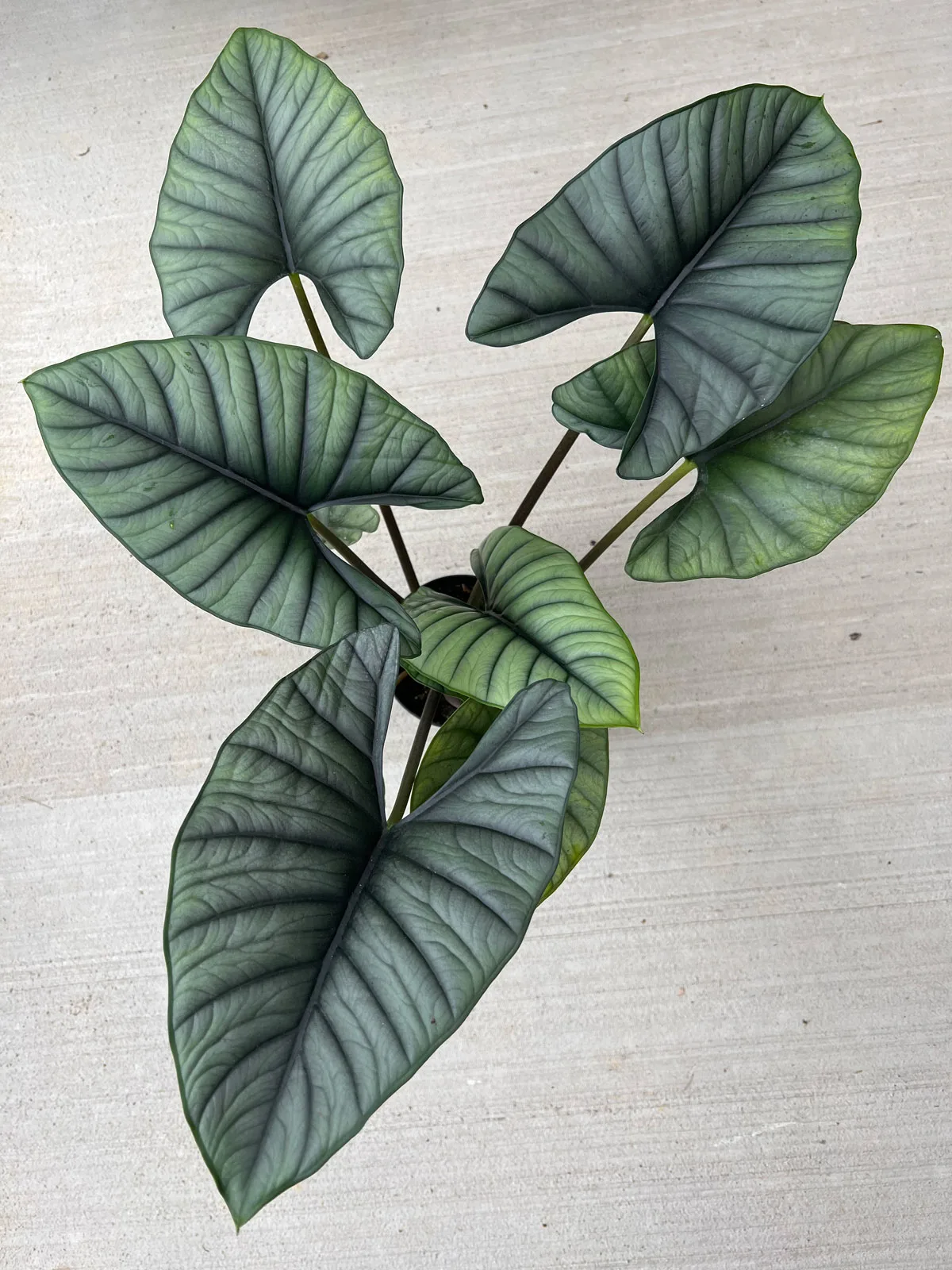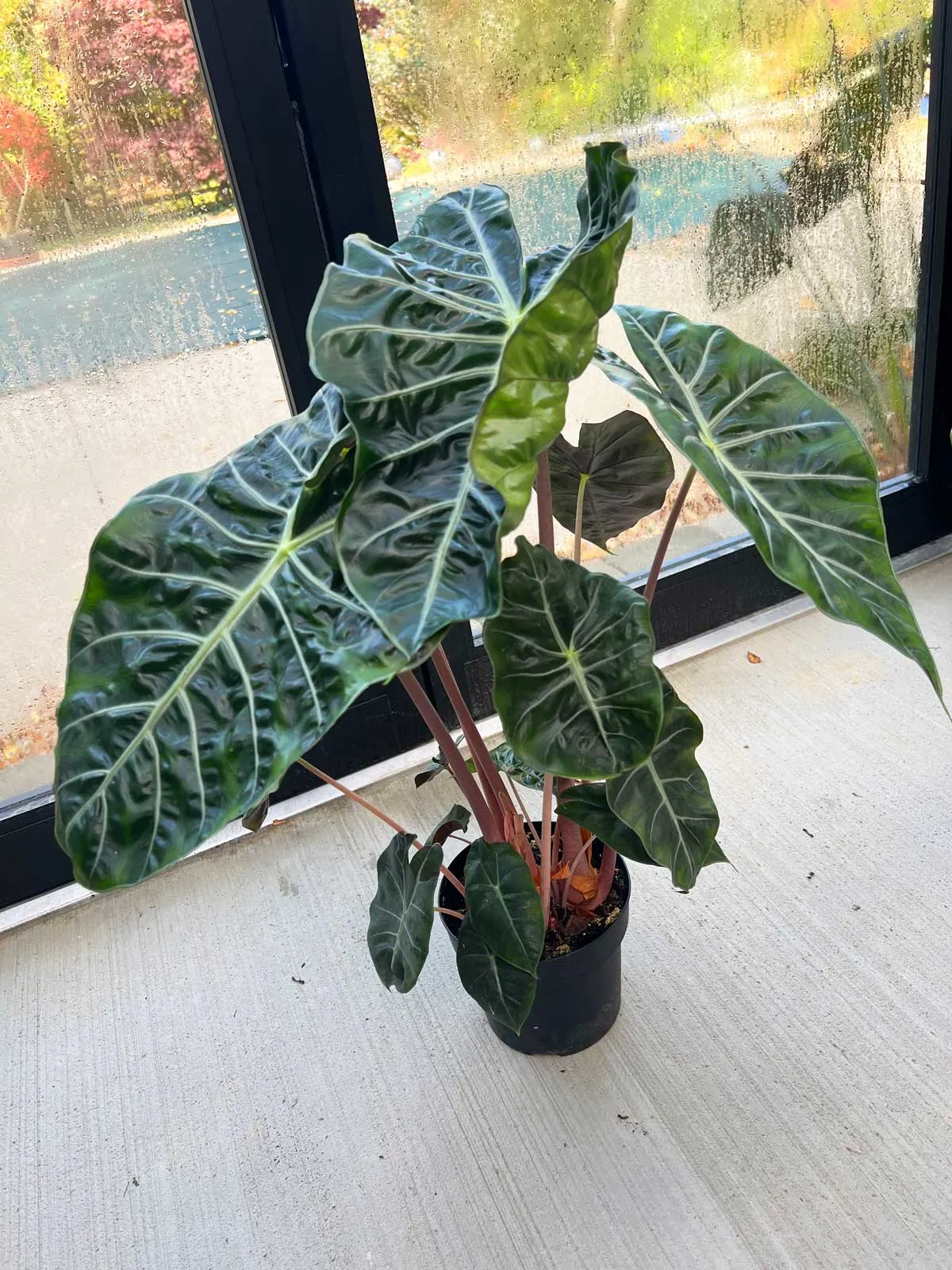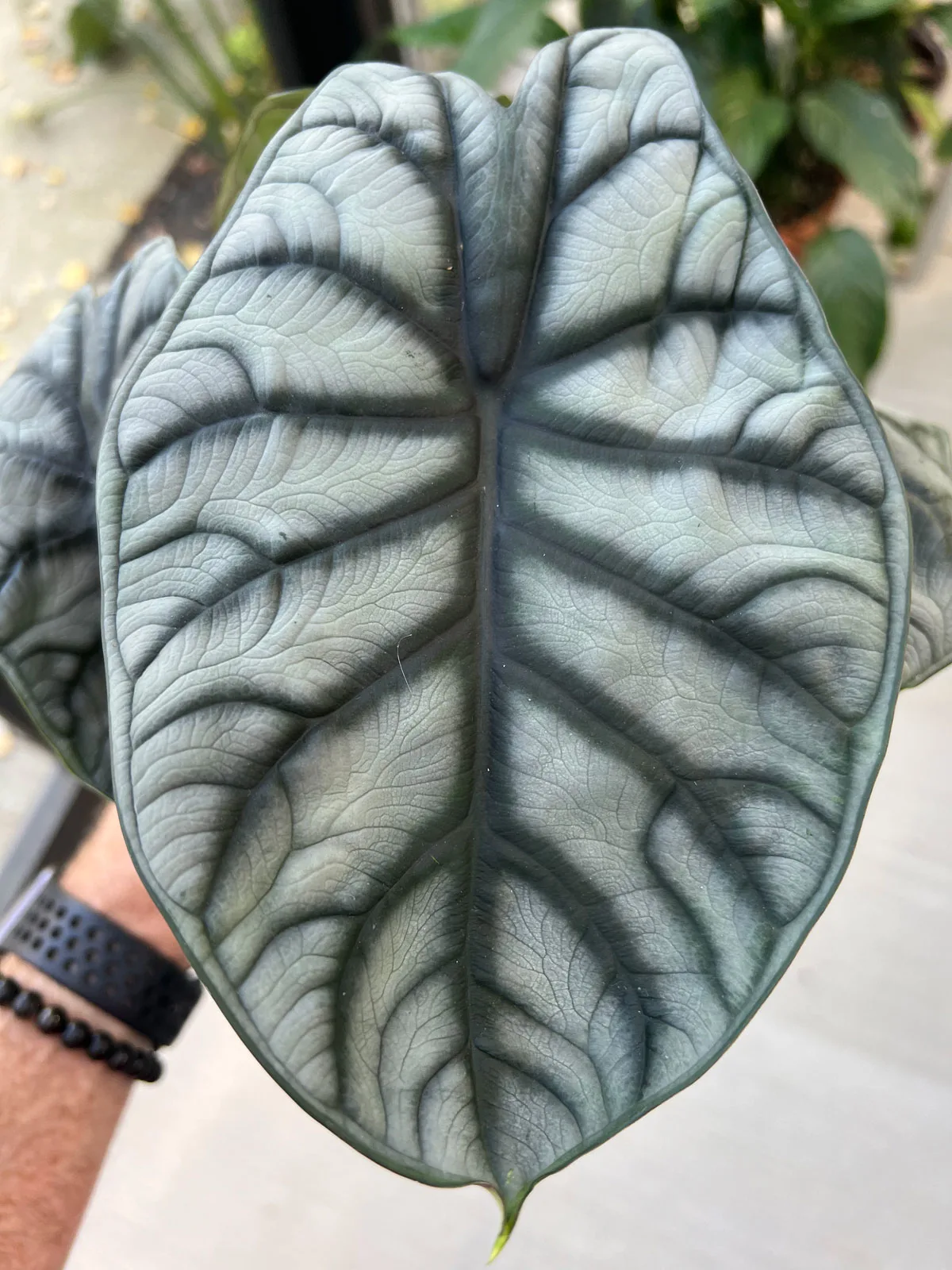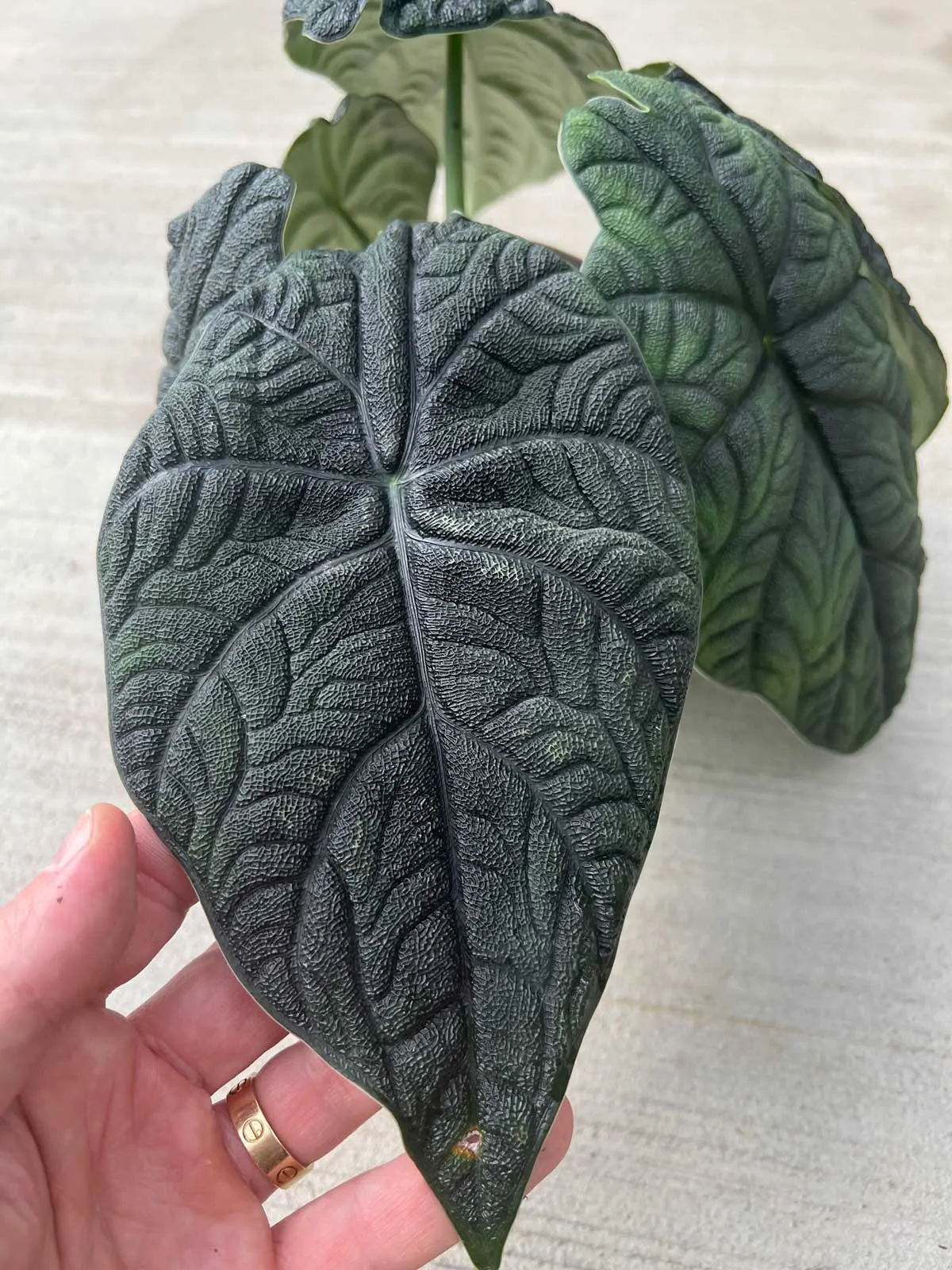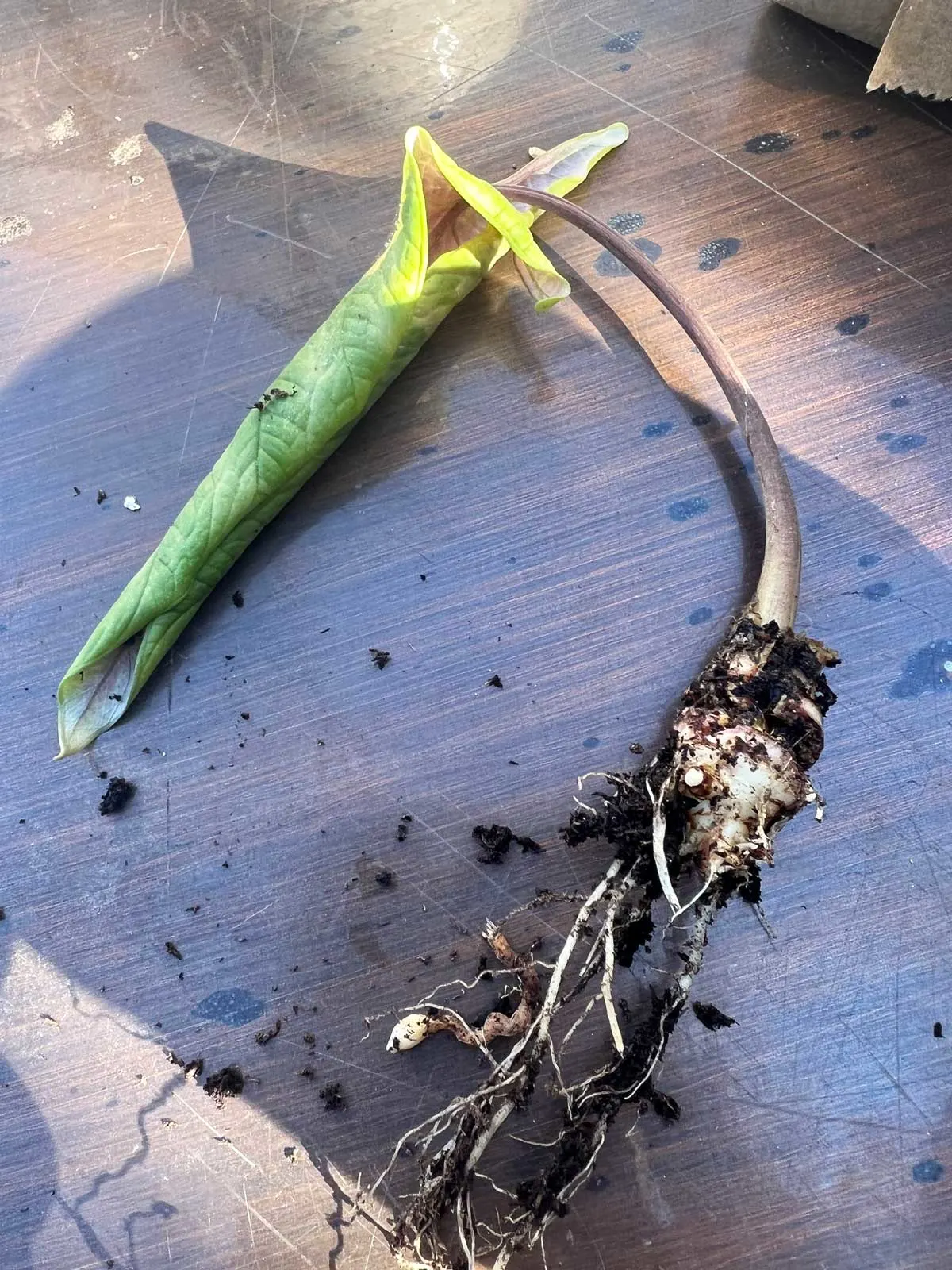Some of the links in this post may be affiliate links.
Are you wondering what the best soil mix is for your Alocasia plant? Alocasia plants can be prone to root rot if you have a soil mix that is not ideal, so the type of soil that you use is very important.
Whether you want to use your own Alocasia soil mix recipe or would like an amazing ready-made mix, keep reading to learn about the best mixes for all Alocasia varieties.
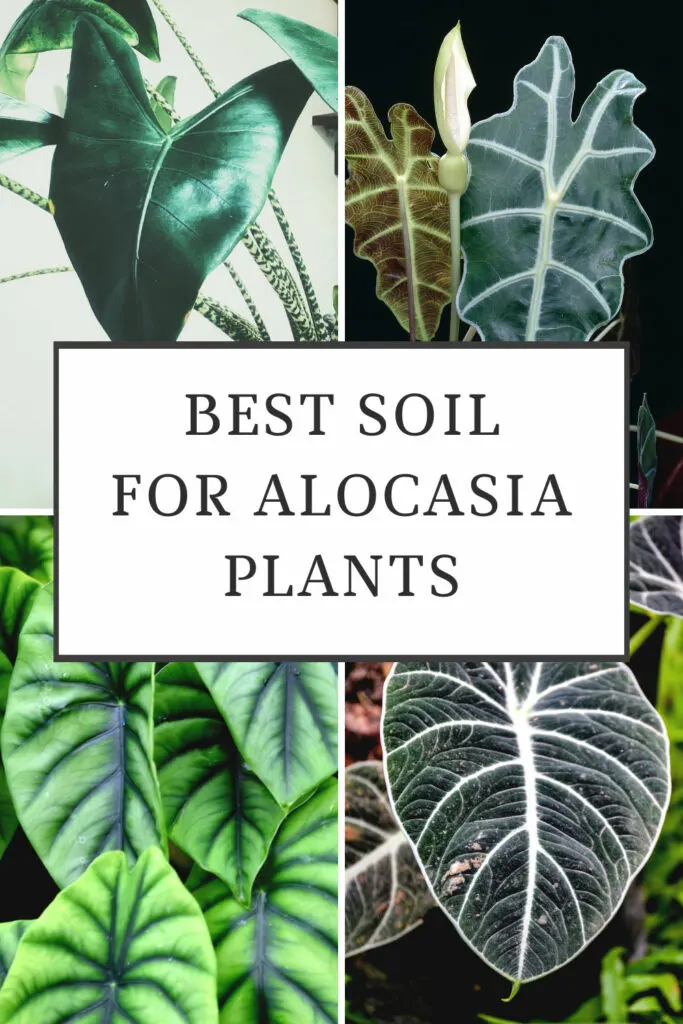
Table of Contents
BEST SOIL FOR ALOCASIA PLANTS
Few tropical plants can beat Alocasias for their gorgeous arrow-shaped leaves and beautiful foliage patterns. Alocasia plants are native to sub-tropical Asia and Eastern Australia.
The common name for Alocasia plants in general includes “elephant ear plant” but this name is also used to describe plants in the Colocasia genus as well.
The choice of potting mix is very important for Alocasia plants!
All too often, the potting mixes that these plants are sold in are fine for growing in commercial greenhouses, but not necessarily for indoor plants that are growing in a home with average conditions. For this reason, it’s best to choose one of the blends in this post.
In this post, I’ll first discuss 1 blend that you can purchase and use straight out of the bag as-is with no fussing and no extra mixing. The next two blends are ones that you can mix yourself with simple ingredients.
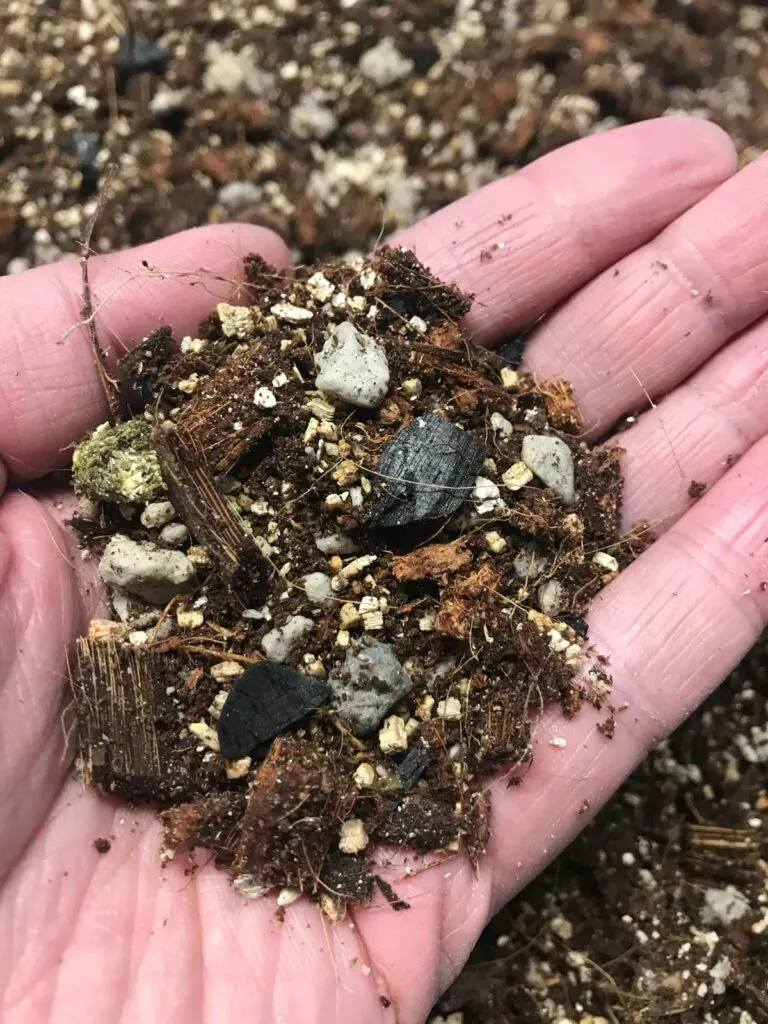
1. PRAY FOR US BLEND
There are very, very few potting mixes that I would use straight out of the bag since most popular commercial mixes that are sold in bags are not sufficient on their own.
For all of your Alocasia species, whether you have an Alocasia Polly plant, Alocasia Frydek, or any one of the numerous varieties of Alocasia types, I would strongly recommend the Pray For Us blend from Oh Happy Plants.
This is simply the best mix that you can buy and it’s wonderful not only for Alocasias, but also for Prayer Plants (Maranta, Calathea, Ctenanthe, Stromanthe), as well as Colocasia and Crotons.
The reason this mix is amazing is that it has been formulated to be moisture retentive but without the fear of holding TOO MUCH moisture that could lead to root rot. The mix allows for plenty of oxygen to the roots as well which is important for Alocasias.
Here are some other properties of the Pray For Us blend from Oh Happy Plants that make it very special:
– There is no peat moss in this blend, so if you are environmentally conscious, this mix is great. Instead of peat moss, coco coir and coco chips are used.
– If you don’t like perlite, you’re in luck. Oh Happy Plants mixes use no perlite.
– Oh Happy Plants uses plenty of good organic matter like coco coir, as well as real ingredients like alfalfa meal, flax seed meal and rock dust to add nourishing nutrients for healthy growth.
– A mycorrhizal inoculant is used which improves plant health and vigor, and increases disease resistance naturally!
– Some charcoal is also included in the mix in order to encourage a healthy root system.
These are just some of the reasons, but I highly encourage you to check out the Pray For Us blend from Oh Happy Plants for your Alocasias. And browse their site since they have specific mixes for a variety of plants. I’ve used so many of them and they’re absolutely amazing.
If you use my link for non-bulk sizes, it will automatically apply a 10% discount as well upon checkout.
If you buy in bulk, you will end up saving some money too.
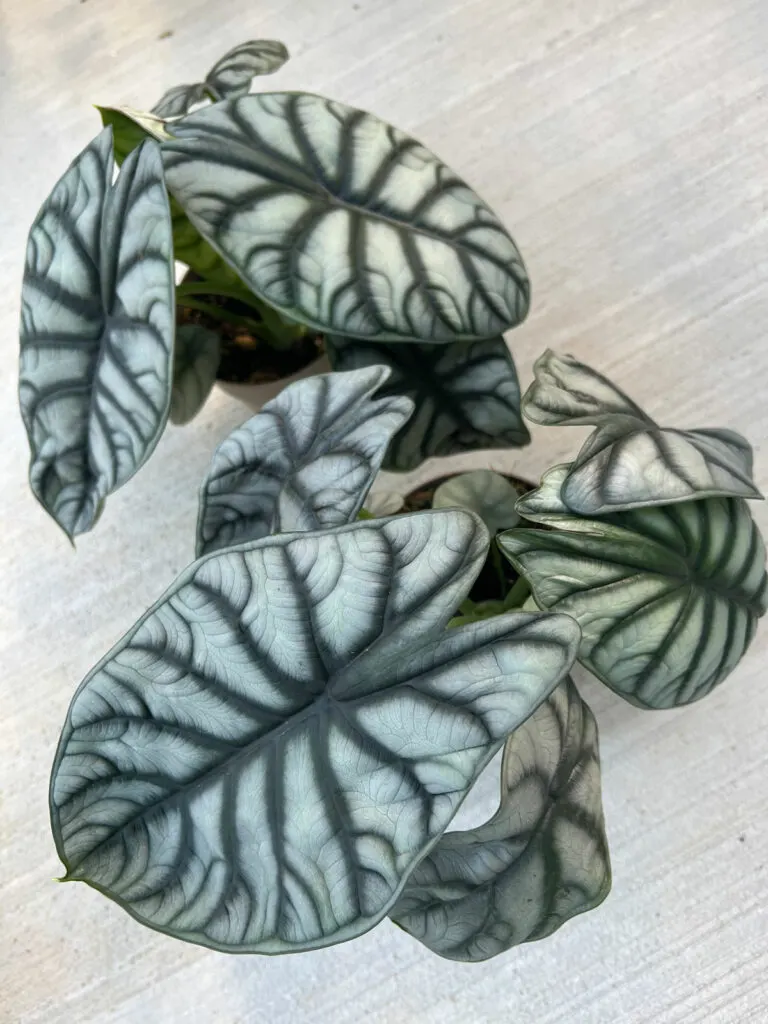
2. MIX YOUR OWN WITH BIG PERLITE
The main “trick” with Alocasia plants is to ensure that you can maintain an evenly moist soil, while still allowing plenty of air and oxygen to the root zone and allowing excess water to freely drain away.
The Pray For Us blend that I mentioned above is superior in this respect, but if you don’t want to use it, you can still amend your favorite potting mix by using a larger perlite.
I really love #3 size perlite because it’s much bigger than “normal” perlite that you can find anywhere. There are a number of advantages to using a bigger perlite.
It improves drainage better than smaller perlite, as well as adds more air to the root zone of your Alocasia plant.
You can buy a big bag and amend tons of potting mix with it. I really like the Mother Earth Size 3 perlite (link to Amazon).
Simply use 2 to 3 parts of your favorite indoor potting mix that you have on hand and mix in 1 part of the Mother Earth Size 3 perlite.
As another option, if you don’t like perlite, you can use horticultural pumice. There are various pros and cons of perlite and pumice, so you can pick whatever you’re comfortable with.
I really love Bonsai Jack’s 1/4″ horticultural pumice. It is always a consistent quality and don’t let the name fool you. It’s not just for bonsai. It is a wonderful material to add to any potting mix to increase both porosity and drainage.
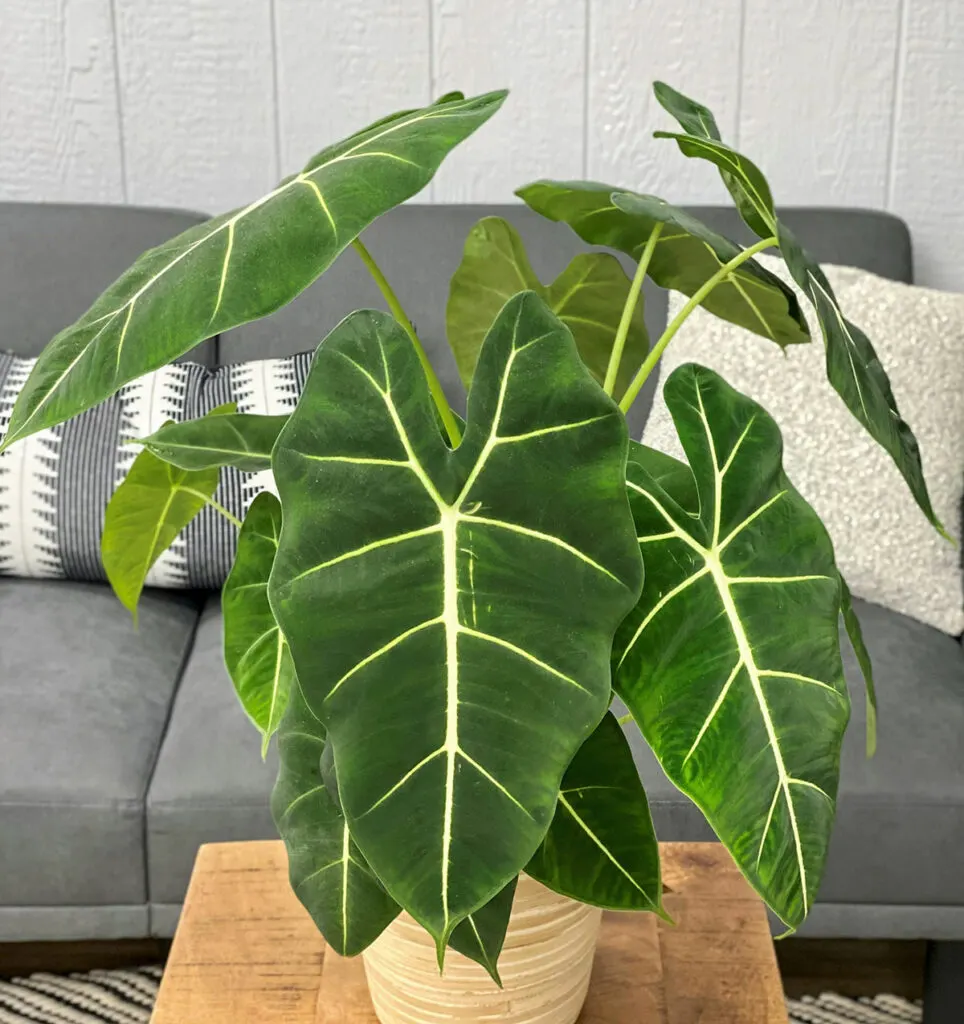
3. MIX YOUR OWN CHUNKY AROID MIX
Lastly, another option for Alocasia plant potting mixes include a popular chunky aroid mix that consists of equal parts of your favorite indoor potting mix, orchid bark and perlite.
As a result of this mix being so chunky, there are some definite pros and cons. Most importantly, this mix results in an extremely well-drained soil so the risk of root rot is basically zero. It is also very difficult to “overwater” your plants.
The main downside is that you’ll end up watering a lot more frequently due to the sharp drainage and also as a result of the mix being less moisture-retentive than the other two blends I’ve described in the previous sections.
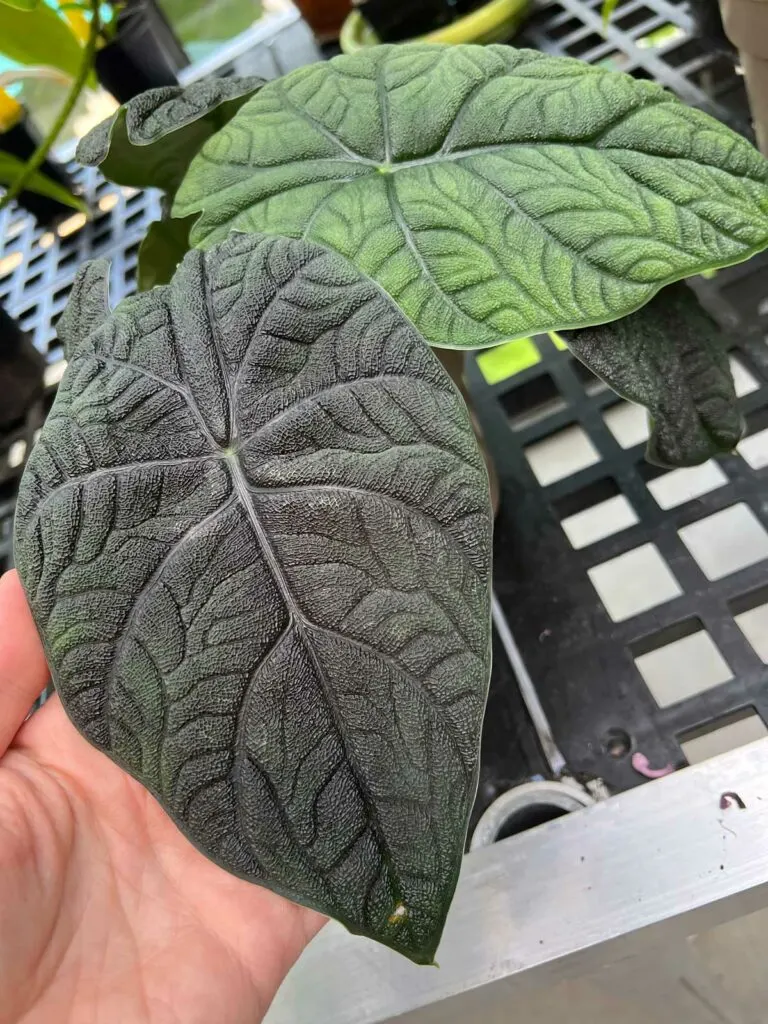
TIP FOR WATERING ALOCASIA PLANTS
Regardless of what potting mix you use, a good rule of thumb is to wait until the top inch of soil has dried out before watering again. Depending on what potting mix you use, they will all have different rates at which they dry out. Some will dry out faster than others.
This is why using a strict watering schedule should be avoided. You should water whenever your potting mix has dried out sufficiently.
Alocasias do not like to dry out completely, but if you allow the top inch of potting mix to dry out, you should be fine as long as your plant is growing in sufficient light and have overall good growing conditions.
Allowing the soil to completely dry out will encourage yellow leaves at the base of the plant, while soggy soil will encourage root rot. Try and find a balance, and do not use moisture meters as many of them are notoriously unreliable.
That being said, all of our growing conditions are different, so naturally, our watering routines will be different.
I talk about all the factors that affect how quickly your potting mix dries out in my book Houseplant Warrior: 7 Keys to Unlocking the Mysteries of Houseplant Care. Various factors will affect how quickly your potting mix dries out, including:
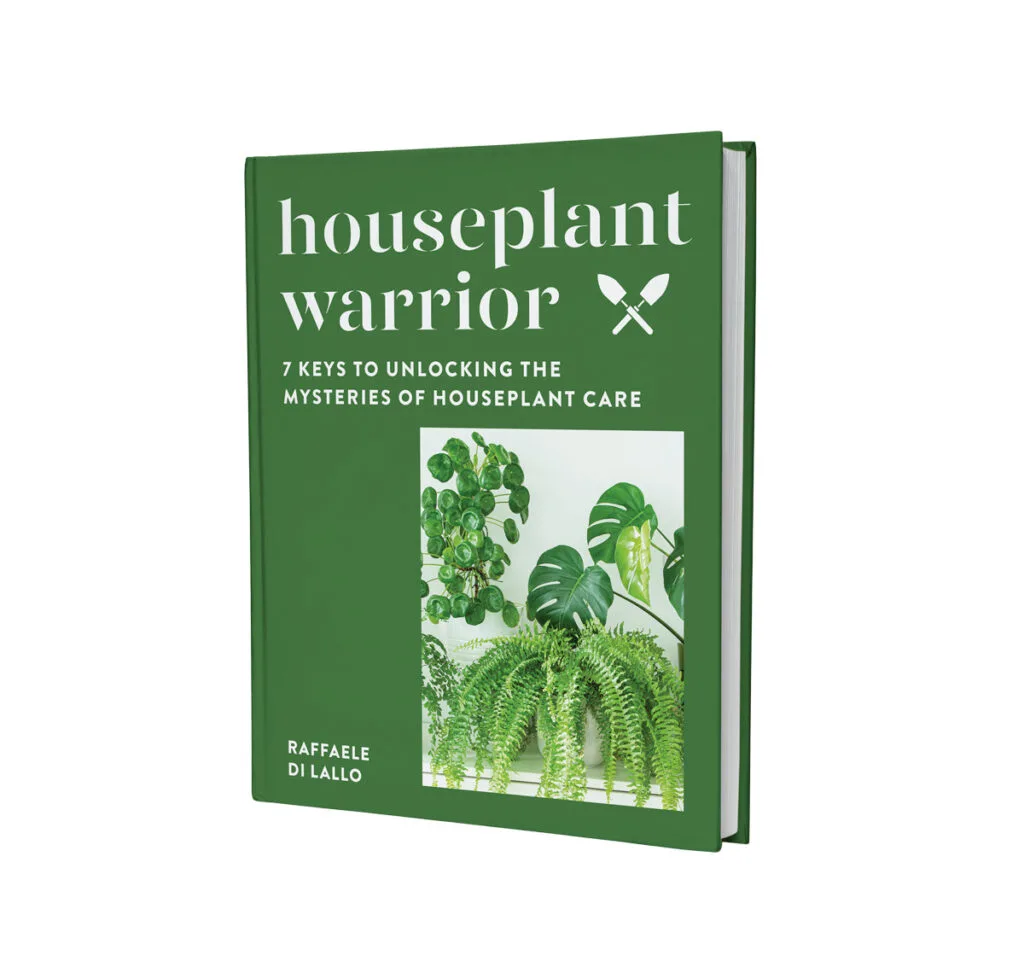
– LIGHT: Low light will cause your mixes to take longer to dry out. Not having enough light is detrimental in many ways and should be the first consideration in plant care.
– HUMIDITY: Low humidity levels will cause your potting mix to dry out more quickly. Humid conditions will do the opposite, although it’s desirable in order to help discourage spider mites, which Alocasia plants can be prone to.
– TEMPERATURE: Warmer temperatures will cause your potting mix to dry out more quickly.
– POTTING MIX TYPE: A regular potting mix with nothing added to it to improve drainage will take longer to dry out.
– POT TYPE AND SIZE: Larger pots will take longer to dry out, and the pot type also affects how quickly the soil will dry out. A drainage hole is always a must so excess moisture doesn’t accumulate at the bottom of the pot. Proper drainage is very important.
I hope you’ve enjoyed this post on the best soil for Alocasia plants. What mixes have you used for your Alocasias? Comment below. I’d love to hear!


